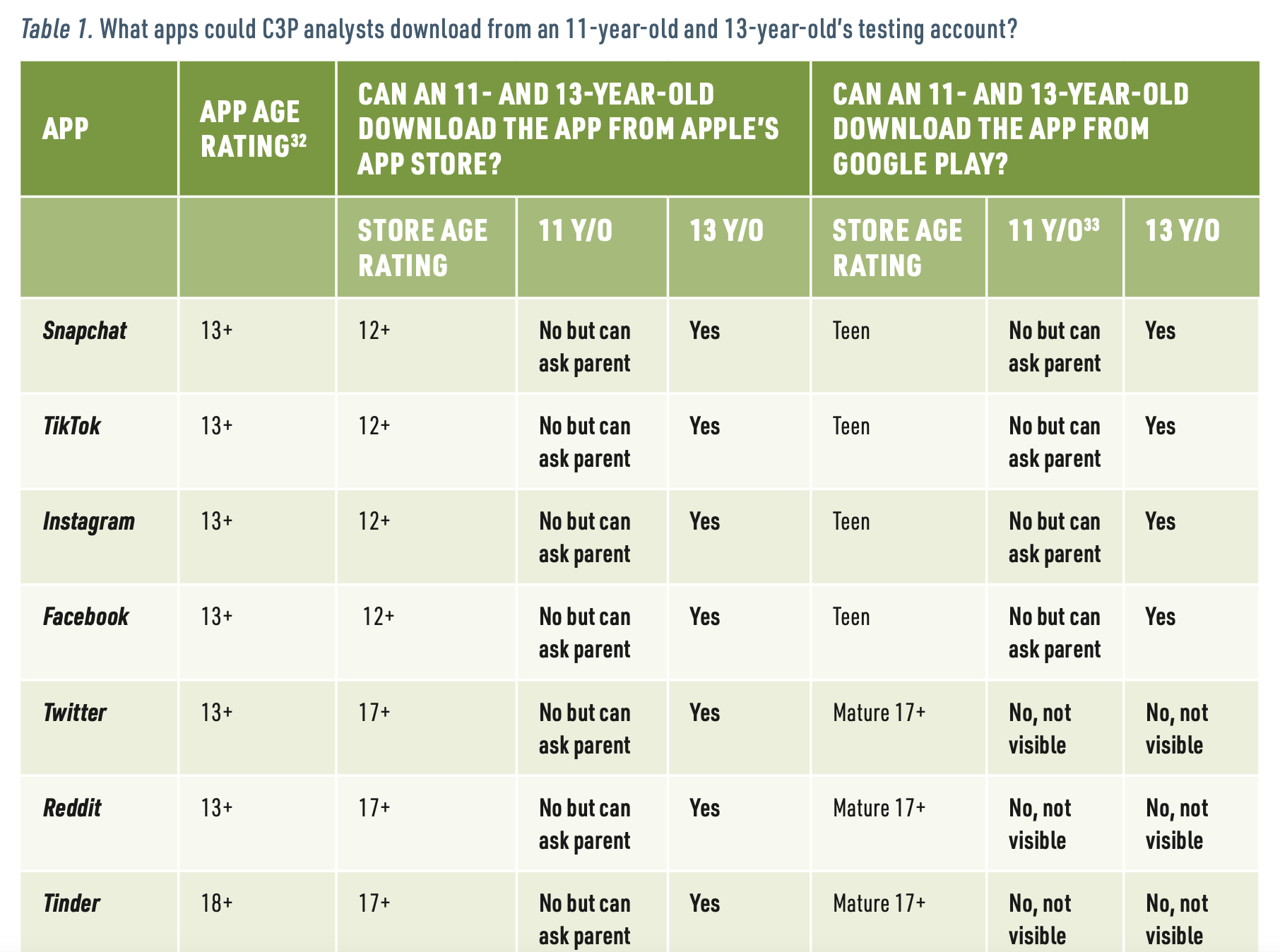The Online Safety Toolkit: Report: Mobile App Age Limits are Unsafe and Unenforced

Over the past several months, we’ve worked to help decipher online safety concerns and tools that are difficult to navigate. We’ve often emphasized that proper use of parental settings can build a shield for unwanted content and experiences. One of the cornerstones of this approach is setting kids’ devices and accounts to their proper age, so that they won’t be able to download apps that aren’t appropriate. Unfortunately, it seems that these foundation-level safety features are less reliable than we had hoped.
The Canadian Center for Child Protection (C3P) has just released a thorough report investigating mobile app age limits in the Apple Appstore and Google Play Store. The findings are not positive for children’s safety. Here are a few key points, and we encourage readers to check out the entire report.
Key Findings:
- For the same app, there are significant differences in age limits between apps’ own terms of service, Appstore, and Google Play.Example: Kik, a popular app that has notoriously been unsafe for kids and allows no parental settings, is rated 13+ in their terms of service, 17+ in the Appstore, and “Teen” in Google Play (which equates to 13+).
- Even when set up as a 7 year old’s account, Google’s default content filtering is “Teen” (13+), meaning they would be able to download age-inappropriate apps, even in violation of apps’ terms of service.
- In both the Appstore and Google Play, analysts were able to get around parental settings simply by trying to bypass them multiple times over several hours.
- With one extra click, the Appstore allows accounts of 13-year-olds to download apps rated 17+, including adult dating, sex, and live camera streaming apps. In a couple instances, analysts were able to access this from accounts set up for even an 11-year-old.
- Through web searches, analysts easily found workarounds for Google Play’s age limits, enabling the account of a 13-year-old to download any app.
- For both age 13 and age 11 accounts, both app marketplaces promoted apps above the account age, including mature content.

[A portion of the Report Findings. Full report here.]
This report is alarming for online safety advocates. Underpinning all of this are brief, vague, unenforced systems for determining an apps’ rating in the first place. Ratings rely heavily on brief questionnaires that are self-reported by app developers. By placing rating responsibility on developers with such a prominent conflict of interests, app marketplaces neglect their commitment to be creating safer environments for youth.
As to what can be done, the report includes a few suggestions:
- Transparency on how ratings are determined and why companies have chosen non-standard ages like 17+ (instead of 18+)
- App age limits should be enforced! Currently both Apple and Google have loopholes or workarounds that allow youth to view and/or download apps that are beyond their age settings.
- Standardize age ratings across platforms. There is no justification for the same app being accessible 4 years earlier simply because one child has an Android and one has an Apple device. At present, this is the case.
Hidden in plain sight, these loopholes are major weaknesses in efforts for online safety, and they require additional learning and skill to try to fill until tech companies take the necessary steps. For guidance on some of the steps to take check out our 5-page guide, Keeping Up with Apps and Parental Settings.